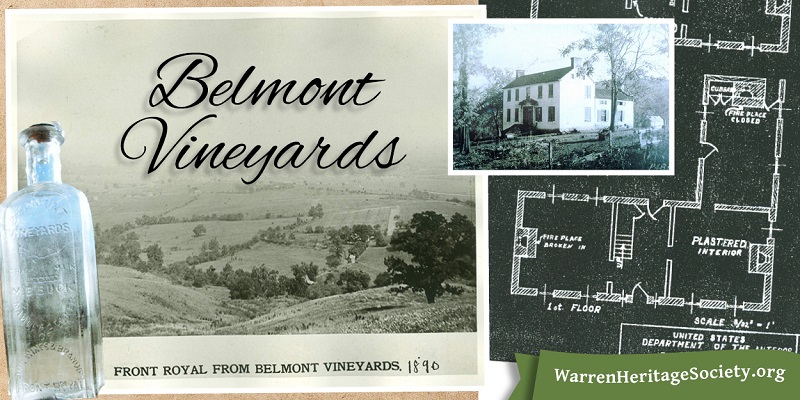
Records of Belmont Winery show a once-thriving business with a grand building, now almost completely lost in the mists of time.
For all our patronage of building supply businesses, never mind our constant online sharing and thousands of archived smartphone pictures, it’s hard to say what evidence or record of our current structures will persist 50, 100, 150, or 200 years from now.
- What do you think will still be around?
- Does your family have photos from the late 1800s, or the early 1900s? Share with us!
Belmont Vineyards and Fruit Farm, an excerpt from the Sentinel shared by Laura Virginia Hale, October 1883
“We visited the Belmont Vineyards and Fruit Farm, near this town, Tuesday, and found marked improvements made during the six years they have been managed by the proprietors, Ashby and McKay.
“The vintage of this year from 80 acres of Catawba, Ives, Delaware, Virginia Norton and Concord grapes, amounts to 15,000 gallons of wine. A large distillery for the manufacture of whiskey and brandy is run by a 20 horse-power engine, which is also used in grinding the grapes and apples, and corn, and rye, and for making corn-meal for the families and stock at Belmont.
“The two Wine-Cellars have been enlarged and improved in ventilation and facilities for handling the large casks, and at the wine-cellar north east of the dwelling house of A.A. McKay, a cistern has been constructed with a capacity of 5,000 gallons, and by means of a force-pump the water therefrom is thrown through hose into any room of the building and used for cleaning and other purposes.
“Fifteen thousand grape-vines which were set out in the old vineyards bore this year and yielded an abundant crop of luscious fruit.
“The reputation of the Belmont wines is attested by the fact that during the last year 6,000 gallons of them were shipped to Minnesota alone, besides large quantities to Alabama, Louisiana, Texas, South Carolina, North Carolina, Georgia, Florida, Mississippi, Maryland, Pennsylvania, New York, Delaware, Illinois, Iowa and other states — and the Virginia and foreign demand for the Whiskey and brandy manufactured there is great and constantly growing.” – The Sentinel, Front Royal, Oct. 12, 1883
From Shenandoah National Park Archive, here’s part of a report from 1945:
“Name of building: Belmont House (Buck Family). Location: North entrance area, about one mile SW of checking station. Invisible from Drive in Summer.
“Description: Brick, plastered walls, 3 chimneys, central hall, metal roof. To rear, log L, clapboarded, metal roof. 4 rooms in brick section, 2 in L. Owner’s house on large prosperous farm of 1850-60s. Most pretentious house in park area. Vacant since 1937. Now unlivable.
“History and Present Use: Built 1845. Early history vague. “Grandpa Buck” kept diary and farm journal (now deposited with Alderman Library, Univ. of VA) which may give more details. A copy of this diary has been retained by a brother of Lawrence M. Buck, who wrote concerning restorations in 1940.
“Belmont was a prosperous farm in pre-Civil War days. Cattle were fattened for market. There were vineyards, orchards, etc. The farm was typical of the rich farm economy of the Piedmont. Decline set in about 1870 and the farm “failed” 5 years later. Warren County records were reputed hidden at Belmont when Front Royal was invaded by Federal Army in Civil War. George Buck and Mrs. Hosberger, both of Front Royal are familiar with the place and its history. Present condition and recommendation: This house is beyond repair and restoration. Historical value only local.”
